Posts: 9,727
Threads: 233
Joined: Dec 2008
Lets let the title say it but post as much information as you can
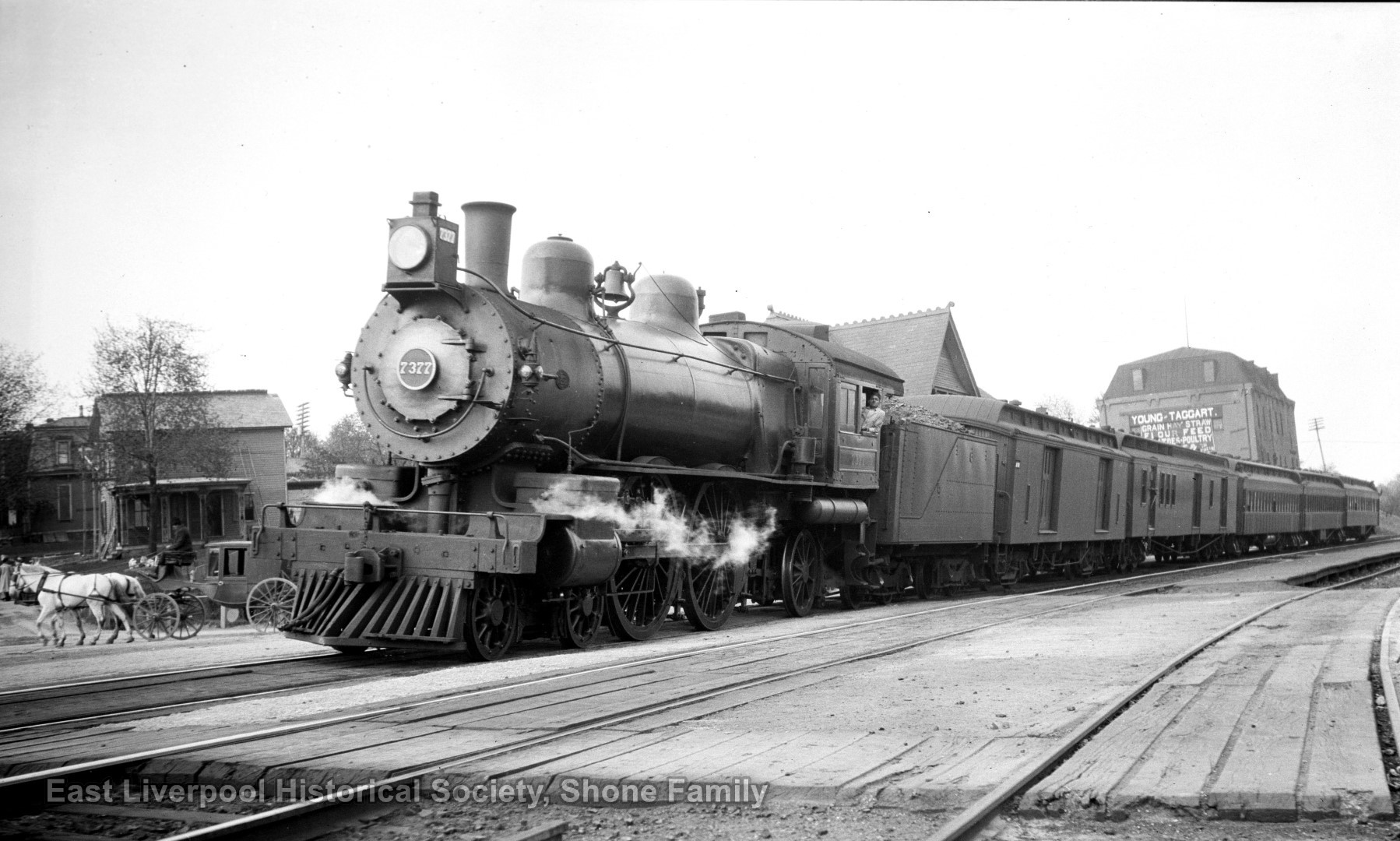
This one was taken in Wooster, Ohio. look at it and pick out clues as to the time frame and the area. It is fun to study a picture instead of just looking at it.
Charlie
I have edited to add a couple more pictures that I am pretty sure were taken the same day and location. There is a lot more added to the story.
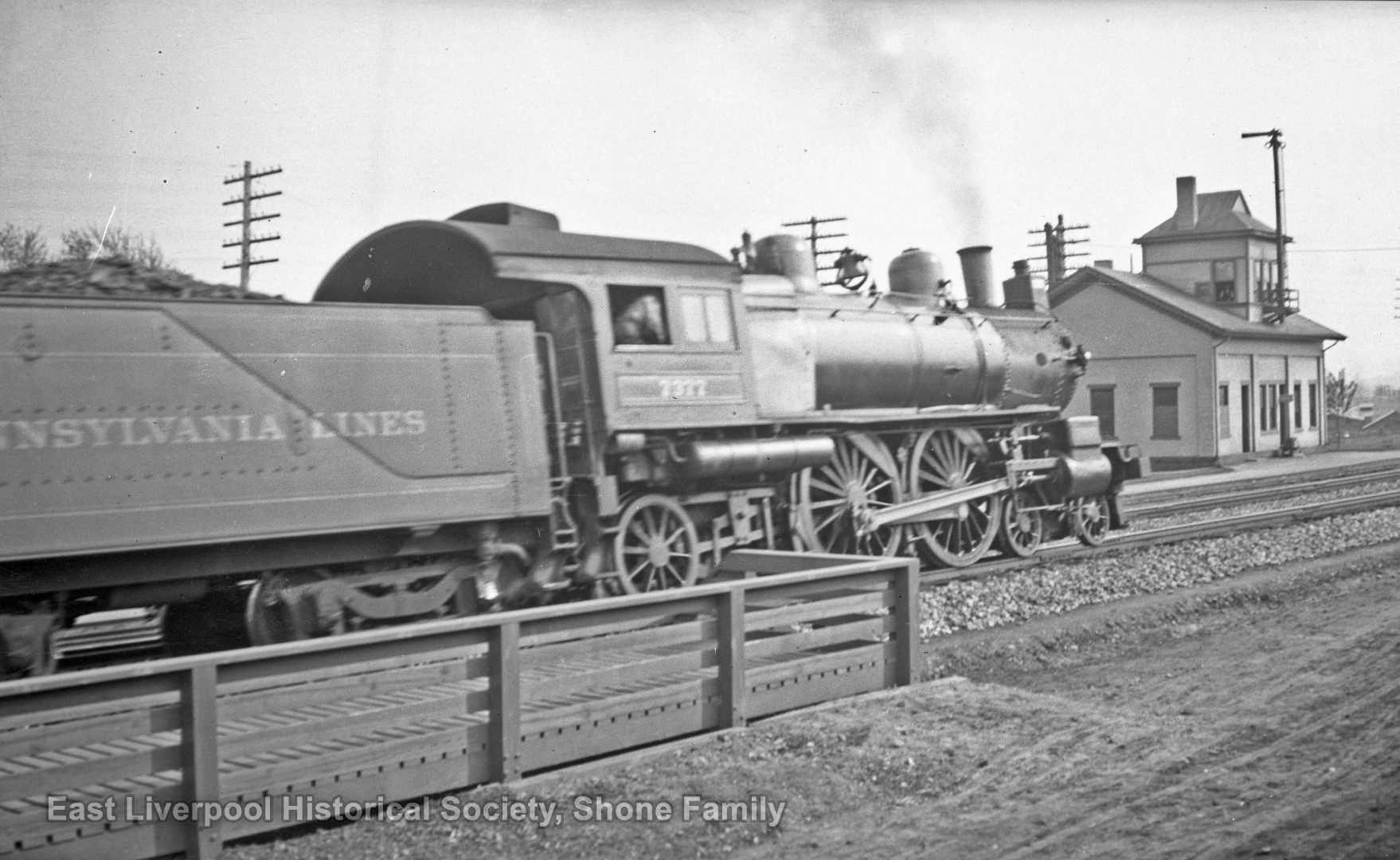
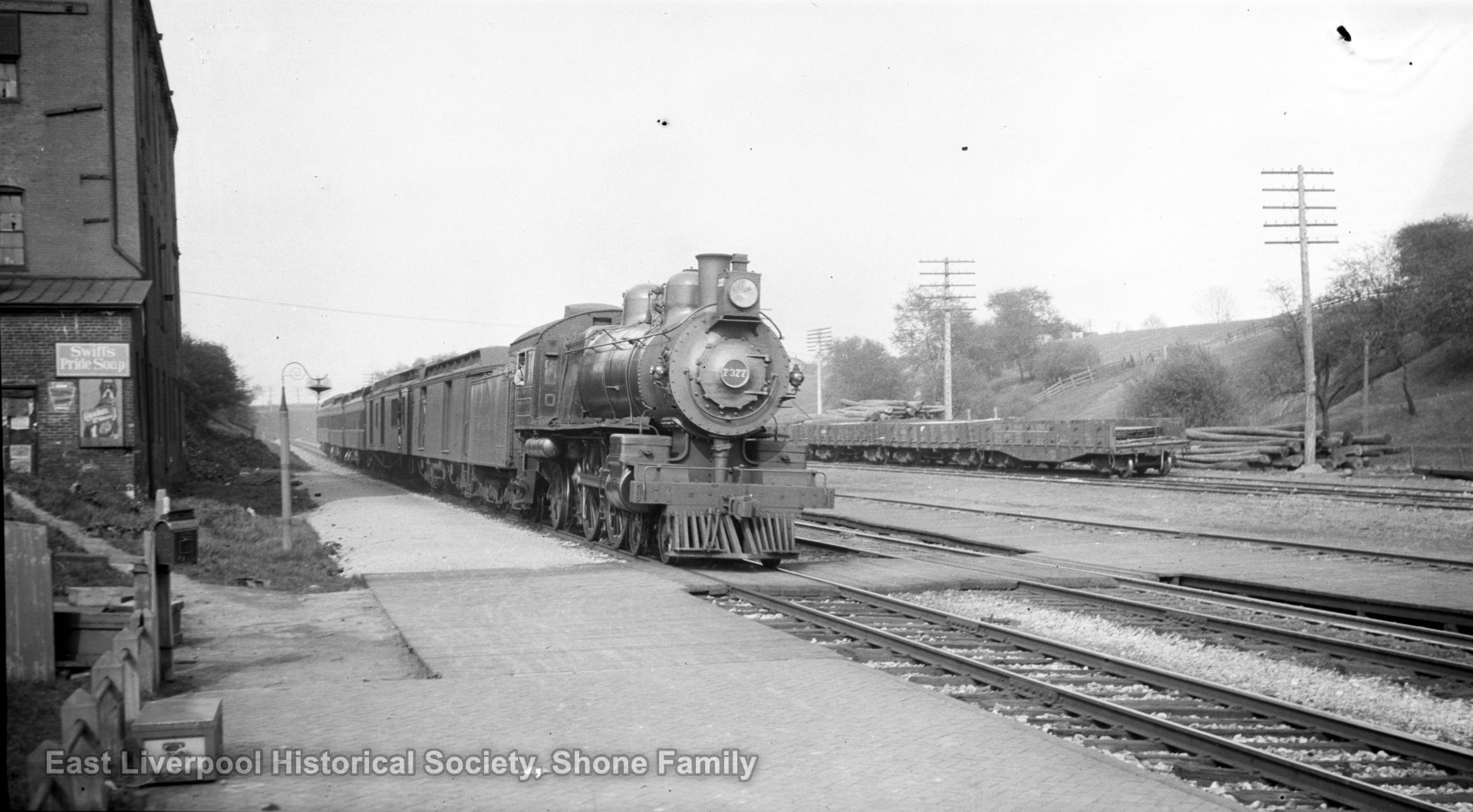
Posts: 838
Threads: 28
Joined: Dec 2008
08-16-2020, 09:47 PM
(This post was last modified: 08-17-2020, 01:03 AM by UP SD40-2.)
EDIT:
I notice the Scandinavian art on top of the roof behind the engine, probably a station, and the wood crossing looks like its been there awhile too, no idea as to what year it could be Charlie.
![[Image: sig2.jpg]](http://i12.photobucket.com/albums/a246/lginc/vids/sig2.jpg) -Deano -Deano
![[Image: up_turb10k_r.gif]](http://i12.photobucket.com/albums/a246/lginc/vids/up_turb10k_r.gif)
Posts: 5,859
Threads: 175
Joined: Dec 2008
Well, Charlie, your photo looks to me to have been taken sometime in the early 1890s, and appears to be a Pennsy locomotive - the give-away is the Belpaire firebox and the number plate on the front of the smokebox. It's still got slide valves and an oil headlight, and all of the passenger cars still have truss rods, too.
The carriage , just beyond the loco, is of a pretty old design, but I'd guess that the person owning it keeps it in good repair.
There's a pole in the background with lots of crossarms, but it could be for either telegraph or telephone, as both were relatively common by this time - not necessarily in every household, though.
I'd guess that if the photo were from a later date, Pennsy would have had an electric headlight on that Atlantic.
I'm also guessing that you know a lot more about this photo, Charlie, so I don't mind being called-out on my mistakes.
Wayne
Posts: 5,159
Threads: 100
Joined: Dec 2008
Charlie---what a great idea for a new thread.Like so many others I have many photos that I failed to date and have been reluctant to post those pictures.Your first picture is a true classic---I've been looking at this photo over and over and I'm amazed at all the detail---it's also an excellent scene for those interested in recreating a modelling diorama.I'm going to start looking through my photos and hopefully will find some worth posting.
Posts: 3,730
Threads: 44
Joined: Dec 2008
Mike
Sent from my pocket calculator using two tin cans and a string
Posts: 1,065
Threads: 112
Joined: Jan 2009
08-17-2020, 08:26 AM
(This post was last modified: 08-17-2020, 08:43 AM by jim currie.)
Charlie it would be more of a Mistry if you remove the or edit the file name , like the part that says PRR 7377 , as for the date i would have to agree with Wayne late 1800's or early 1900's as the round number plate dates it before 1930 . the loco type might be an E-2 but the number doesn't jive with that class on the 1930's list I have on list it's a E-7 but number could have changed. the carriage in background i would guess its a cab(taxi) that had dropped someone off at the station .
Jim
Posts: 5,859
Threads: 175
Joined: Dec 2008
(08-17-2020, 08:26 AM)jim currie Wrote: Charlie it would be more of a Mistry if you remove the or edit the file name , like the part that says PRR 7377 ....
I never even saw that, until you mentioned it, Jim. I had to go back to the picture to find it.
I figured it was a Pennsy loco by the Belpaire firebox and the round number plate on the smokebox-front.
Wayne
Posts: 5,159
Threads: 100
Joined: Dec 2008
Charlie---I think the locomotive in your picture is a Pennsylvania RR D-16 Atlantic.I found the following information on GOOGLE:
If so,this picture was probably taken in the 1890's or very early 1900's.
Pennsylvania Railroad class D16
From Wikipedia, the free encyclopedia
Jump to navigationJump to search
undefined
This article needs additional citations for verification. Please help improve this article by adding citations to reliable sources. Unsourced material may be challenged and removed.
Find sources: "Pennsylvania Railroad class D16" – news · newspapers · books · scholar · JSTOR (August 2016) (Learn how and when to remove this template message)
PRR D16sb[1]
undefined
Preserved #1223 at the Strasburg Rail Road.
hide
[size=undefined][size=undefined]Type and origin
Power type
Steam
Designer
Theodore N. Ely, Axel S. Vogt, Frank D. Casanave
Builder
PRR Juniata Shops
Model
D16sb
Build date
1895–1910
Total produced
426[/size][/size]
hide
[size=undefined][size=undefined]Specifications
Configuration:
• Whyte
4-4-0
• UIC
2′B
Gauge
4 ft 8 1⁄2 in (1,435 mm) standard gauge
Leading dia.
36 in (914 mm)
Driver dia.
68 in (1,727 mm)
Wheelbase
22 ft 9.5 in (6.95 m)
Length
62 ft 5 3⁄8 in (19.03 m)
Height
14 ft 5 1⁄2 in (4.41 m)
Axle load
51,800 lb (23.5 tonnes)
Adhesive weight
98,500 lb (44.7 tonnes)
Loco weight
141,100 lb (64.0 tonnes)
Fuel type
Coal
Fuel capacity
26,000 lb (11.8 tonnes)
Water cap
5,600 US gal (21,200 L)
Firebox:
• Firegrate area
33.23 sq ft (3.09 m2)
Boiler pressure
175 lbf/in2 (1.21 MPa)
Heating surface:
• Tubes and flues
1,219 sq ft (113.25 m2)
• Firebox
181 sq ft (16.82 m2)
Superheater:
• Type
Schmidt
• Heating area
253 sq ft (23.50 m2)
Cylinders
Two
Cylinder size
20.5 in × 26 in (521 mm × 660 mm)
Valve gear
Stephenson[/size][/size]
hide
[size=undefined][size=undefined]Performance figures
Tractive effort
23,900 lbf (106.31 kN)
Factor of adh.
4.1[/size][/size]
hide
[size=undefined][size=undefined]Career
Preserved
One (No. 1223) preserved, remainder scrapped
Disposition
No. 1223 on display[/size]
Class D16 on the Pennsylvania Railroad was their final development of the 4-4-0 "American" type of steam locomotive.[2] A total of 429 of these locomotives were built at the PRR's Juniata Shops, spread across five subclasses; some had 80 in (2,030 mm) diameter driving wheels for service in level territory, while others had 68 in (1,730 mm) drivers for mountainous terrain.[3] In the pre-1895 scheme, these locomotives were second class L.
Construction continued until 1910, and the locomotives, aided by a rebuild program from 1914, remained in service in large numbers until the 1930s, a small number surviving into the 1940s. One locomotive, #1223, was preserved and is currently on display.
Contents
[/size]
[size=undefined]
Design[edit]
These locomotives were originally conceived as an enlargement of the earlier class P (later reclassified D14) and were an extremely large and powerful locomotive for the period.[2] Breaking with the traditional 4-4-0 layout with a low-slung boiler and the firebox between the frames, the class L design had a large Belpaire firebox above the frames and a large high-mounted boiler. The high center of gravity proved to offer an exceptional high-speed ride.
The design was the product of three men; general superintendent of motive power Frank D. Casaneve, chief mechanical engineer Axel S. Vogt, and chief of motive power Theodore N. Ely, Casaneve supervising the overall design, Vogt perfecting the mechanical details and Ely paying more attention to the appearance and external detail.[4]
Two versions were conceived, reflecting the variety of terrain the PRR traversed; a high-drivered version for flat terrain with 80 in (2,030 mm) wheels and a low-drivered version for hilly terrain with 68 in (1,730 mm) wheels. The versions had tractive effort ratings of 17,500 lbf (77.84 kN) and 20,600 lbf (91.63 kN), respectively. In the reclassification of 1895, the 68-inch drivered locomotives became class D16 and the 80-inch became D16a.
Production[edit]
73 of the high-drivered D16a subclass were built between 1895–1898, and 6 of class D16 in 1896. A slightly revised low-drivered subclass D16b was constructed to the tune of 262 examples between 1900–1908, as well as 12 high-drivered D16c in 1900 and 45 high-drivered D16d between 1900–1910.[5]
As the American (4-4-0) type was displaced from top-flight service to secondary duties, tractive effort became more important than top speed. Large numbers of the high-drivered locomotives were converted to low-drivered; 76 D16a and D16c were converted to subclass D16, while 9 of class D16d were converted to D16b specification; this left only a small number of locomotives with 80-inch drivers.
Rebuilds[edit]
In 1914, the PRR experimentally rebuilt D16b #178 in the Altoona Shops, giving it a superheater for greater power and efficiency. This necessitated replacing the slide-valve equipped cylinders, the lubrication of which was incompatible with the hotter, dryer superheated steam, with piston valves and slightly larger cylinders. Steam pressure was reduced by 10 psi (0.7 bar) to 175 psi (12.07 bar). Tractive effort increased to 23,900 lbf (106.31 kN) from 20,600 lbf (91.63 kN). The rebuilt locomotive was classified D16sb, the "s" referring to superheat.
The conversion proving a success, over the next few years 241 locomotives of various D16 sub-classes were converted to D16sb configuration, with 68-inch drivers.[5] In addition, a number of high-drivered locomotives were rebuilt; these were classified D16sd.[2]
Later career[edit]
Even by the early 1900s the 4-4-0 type was becoming eclipsed by larger types such as 4-4-2 "Atlantics" in top-flight service, and the D16 locomotives became stalwarts on more pedestrian services; slower trains, locals, branch line service, and commuter services. The rebuilds to D16sb and D16sd gave them a new lease of life in such service, and even by December 1929 there were still 143 examples in operation, mostly in the Eastern and Central Regions.[2] A number were sold to the small Kishacoquillas Valley Railroad in Belleville, Pennsylvania, and the quantities in service with the PRR dwindled progressively as train lengths increased and newer locomotives trickled down, especially with the reduced traffic of Depression years and with steam locomotives made surplus by the railroad's electrification projects.
Last survivors[edit]
The last of the PRR's American types were found on the branch lines of the Delmarva Division, on the Delmarva Peninsula, encompassing parts of the U.S. states of Maryland, Delaware and Virginia. Three locomotives were left at the beginning of World War II, numbers 1035, 1223 and 5079; of these, only 1223 retained its slatted passenger pilot. This locomotive, a 1905 product of the Juniata Shops, was selected by the railroad for preservation as a historic artifact and was stored at Wilmington, Delaware until 1951, following which it was placed in the PRR's historic collection in the roundhouse at Northumberland, Pennsylvania. In 1953, the last of the D16s were retired.
Strasburg Railroad[edit]
In 1960, the 1223 was leased and transferred to the Strasburg Rail Road, a tourist line in the Amish hamlet of Strasburg, Pennsylvania, where it was returned to operating condition. It operated tourist trains there until 1989, successively leased by the PRR, its successor Penn Central from 1968, and the Railroad Museum of Pennsylvania from 1979. While in operation, it had Strasburg Railroad lettering on both cab sides below the number.
Railroad Museum of Pennsylvania[edit]
Survivor D16sb #1223 is now a restored static exhibit at the Railroad Museum of Pennsylvania, near Strasburg and the Strasburg Rail Road on which it operated for many years.
References[edit][/size]
- ^ Pennsylvania Railroad (1928-05-07). "PRR D16sb Diagram (Tracing #E48868)". Retrieved 2007-12-25.
- ^ Jump up to:a b c d Staufer, Alvin F. & Pennypacker, Bert (1962). Pennsy Power: Steam And Electric Locomotives of the Pennsylvania Railroad 1900-1957. Staufer. LOC 62-20878.
- ^ Hollingsworth, Brian (2000). The Illustrated Directory of Trains of the World. MBI Publishing Company. p. 76. ISBN 0-7603-0891-8.
- ^ Lamb, J. Parker (2003). Perfecting the American Steam Locomotive. Indiana University Press. ISBN 0-253-34219-8.
- ^ Jump up to:a b Berkey, Bob. "PRR Steam Roster, Pt. 2". North East Rails. Retrieved 2007-12-25.
[size=undefined]
undefined
Wikimedia Commons has media related to Pennsylvania Railroad D16.[/size]
show
[size=undefined]
Pennsylvania Railroad locomotives
Categories: [/size]
Posts: 5,159
Threads: 100
Joined: Dec 2008
This picture from Aug.1950 which was given to me by Charles Cooper has a very personal connection.Shown are two E10A Moguls heading south towards Hagersville ON.In the gangway of the leading locomotive is my Father.
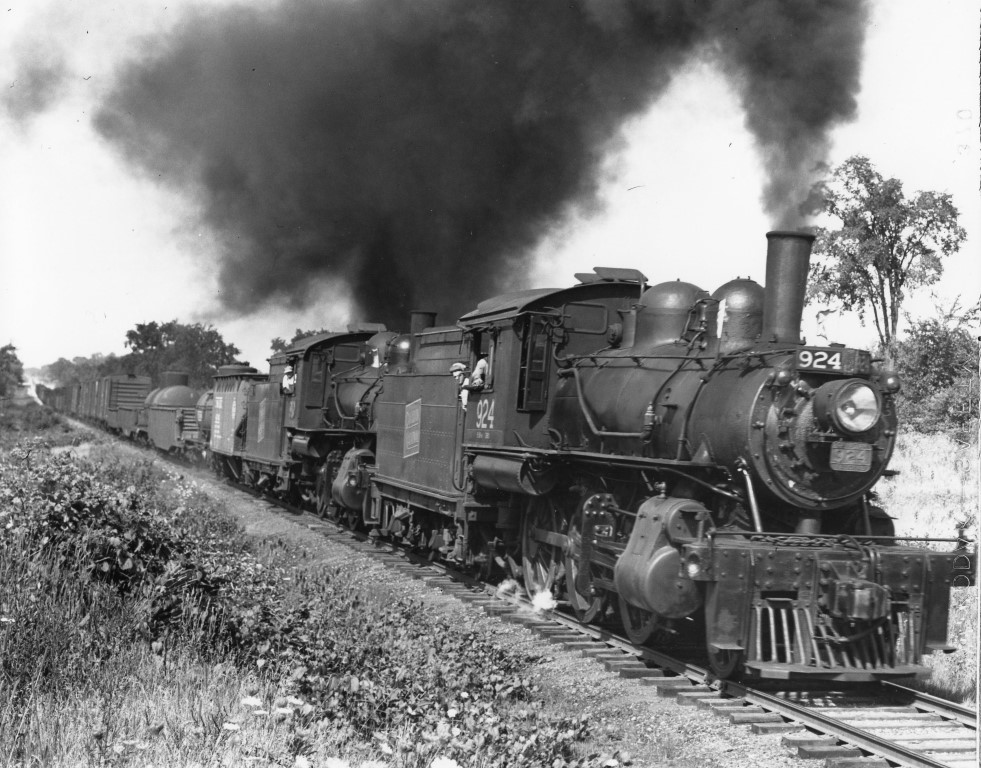
Posts: 2,089
Threads: 40
Joined: Dec 2008
Charlie - Nice photo. The only thing I could figure it out was it was PRR from the number plate on the boiler.
Ed - That is so cool your father is in the photo
Here is a railfan photo I readily have available (aka no scanning required). It was taken by son at the Railroad Museum of Pennsylvania. It was taken I think in 2008. He was working on his Photography and Railroading Merit Badges at the time. This a Reading FP7A. The locos were the last diesels SEPTA operated on commuter trains. When the service to Pottstown and Reading ended the locos were acquired by the Philadelphia Chapter of the NRHS and the Lancaster Chapter of the NRHS. They are used for special trips now.
![[Image: UVQU1PP.jpg]](https://i.imgur.com/UVQU1PP.jpg)
I just realized many of my railfan photos taken after 1998 are on CD's and I currently do not have a CD reader.
Posts: 9,727
Threads: 233
Joined: Dec 2008
(08-17-2020, 09:53 AM)cn nutbar Wrote: Charlie---I think the locomotive in your picture is a Pennsylvania RR D-16 Atlantic.I found the following information on GOOGLE:
If so,this picture was probably taken in the 1890's or very early 1900's.
Ed, the locomotive pictured is probably an E7sb It's a 4-4-2
Charlie
Posts: 9,727
Threads: 233
Joined: Dec 2008
Here is a picture I would really like an exact location for. April 1978 and I know we were near Hartford but that is all I can tell about the location.
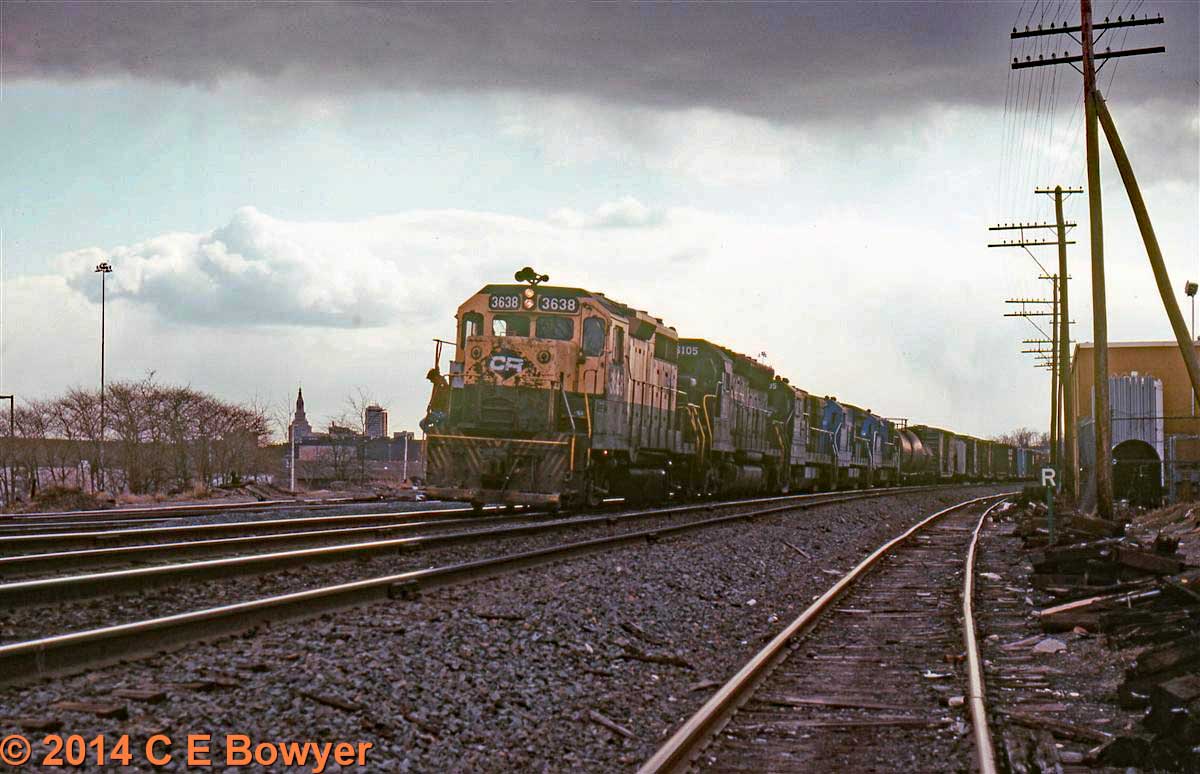
Charlie
Posts: 5,159
Threads: 100
Joined: Dec 2008
Another picture with my Father.
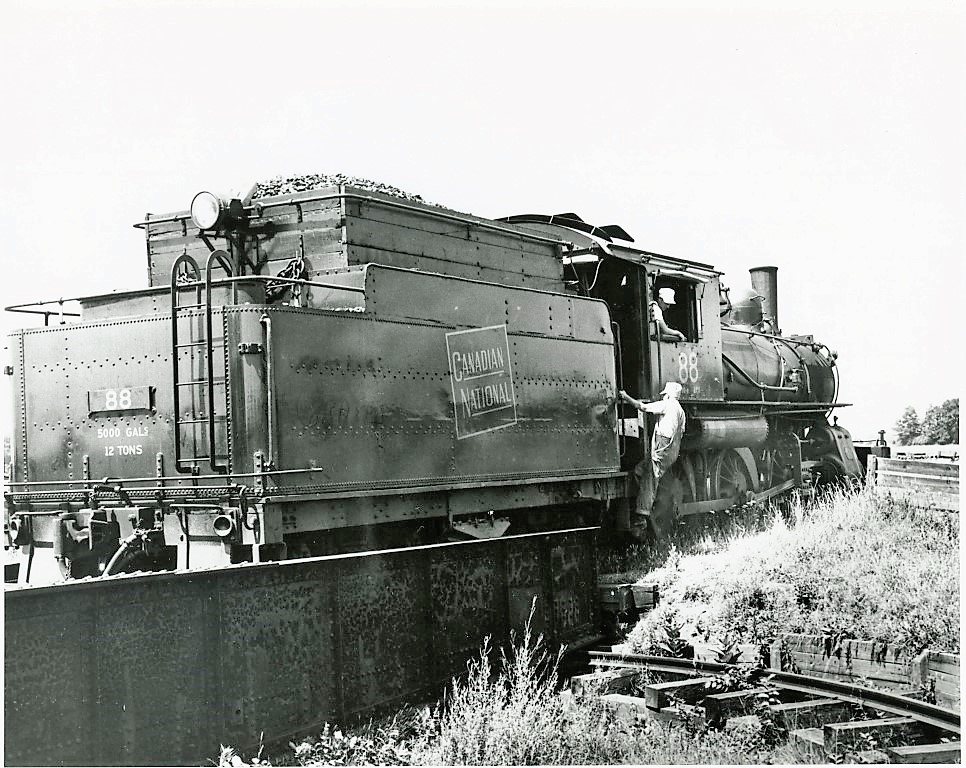
Posts: 838
Threads: 28
Joined: Dec 2008
![[Image: sig2.jpg]](http://i12.photobucket.com/albums/a246/lginc/vids/sig2.jpg) -Deano -Deano
![[Image: up_turb10k_r.gif]](http://i12.photobucket.com/albums/a246/lginc/vids/up_turb10k_r.gif)
Posts: 5,859
Threads: 175
Joined: Dec 2008
Interesting photo, Ed, apparently out of Ian Wilson's "Steam Echoes of Hamilton". It's especially interesting to me in that I hadn't payed too much attention to the July 25, 1953 date, which was roughly two months after the 88's unfortunate incident on Ferguson Avenue, in Hamilton, on May 27, 1953.
I was there, with my mother and younger brother, to view the aftermath of the old girl's tender-truck picking the points, and putting the 88 on her side in the street.
That's a good view of the rebuilt tender, which was quite different than the one involved in the wreck. I have the locomotive (brass) re-detailed to match the post-accident appearance, but still need to build a new body for the tender. I'll use mostly styrene for that, and mount it on the original brass underframe. I'll also save the model's original tender body, in case the next owner prefers it.
Wayne
|






![[Image: sig2.jpg]](http://i12.photobucket.com/albums/a246/lginc/vids/sig2.jpg)
![[Image: up_turb10k_r.gif]](http://i12.photobucket.com/albums/a246/lginc/vids/up_turb10k_r.gif)

![[Image: UVQU1PP.jpg]](https://i.imgur.com/UVQU1PP.jpg)
